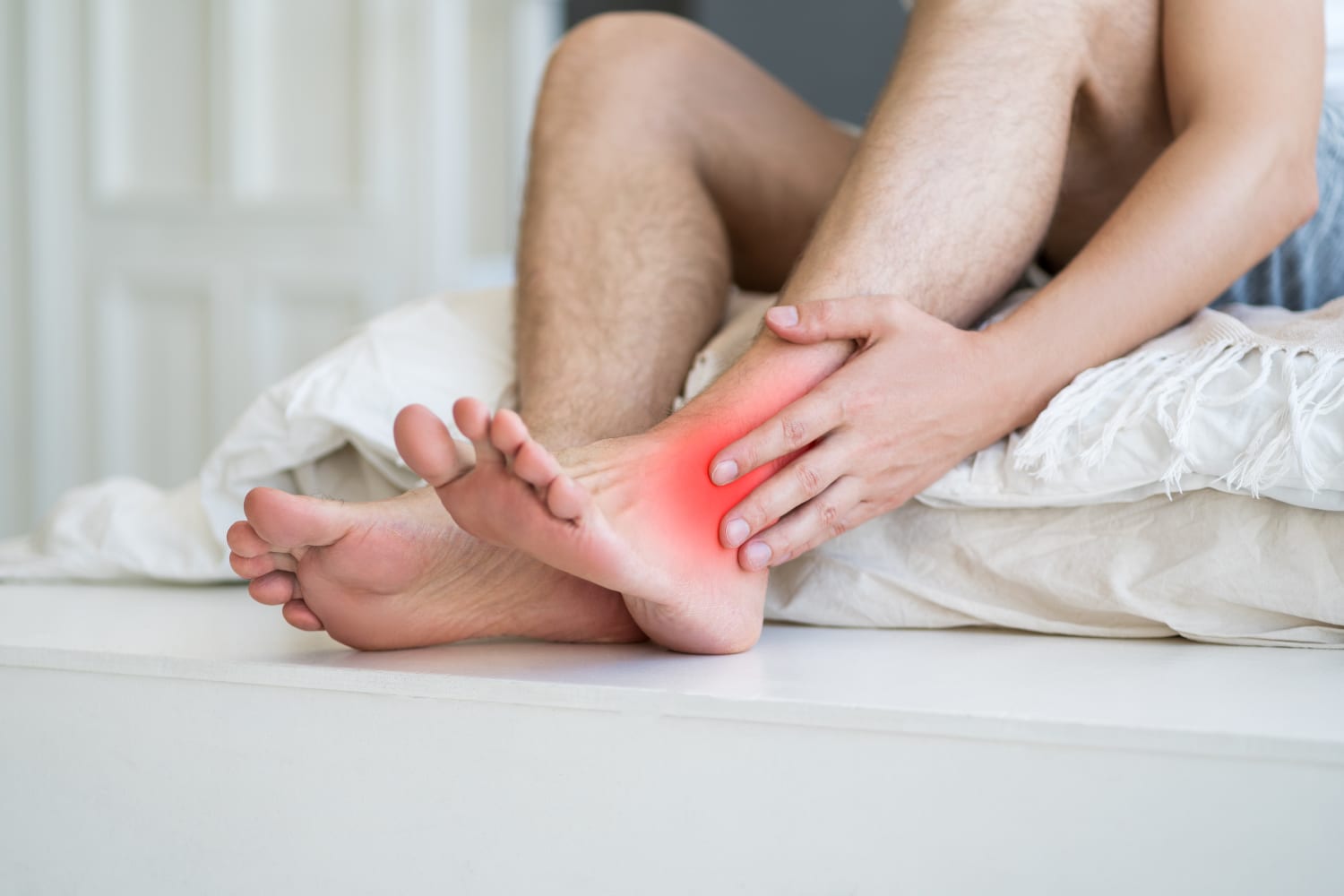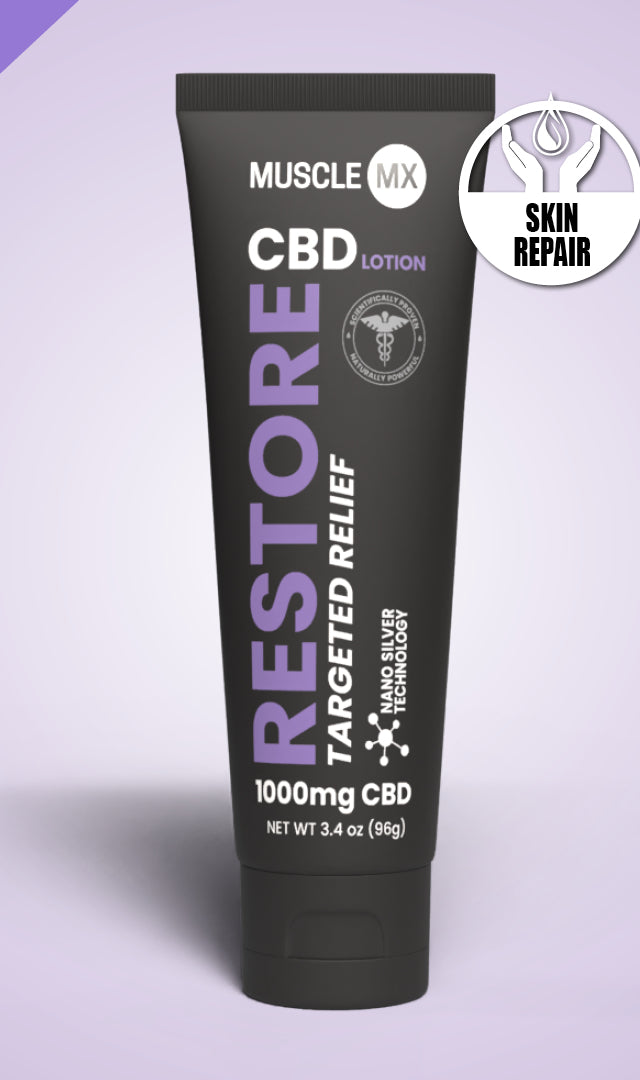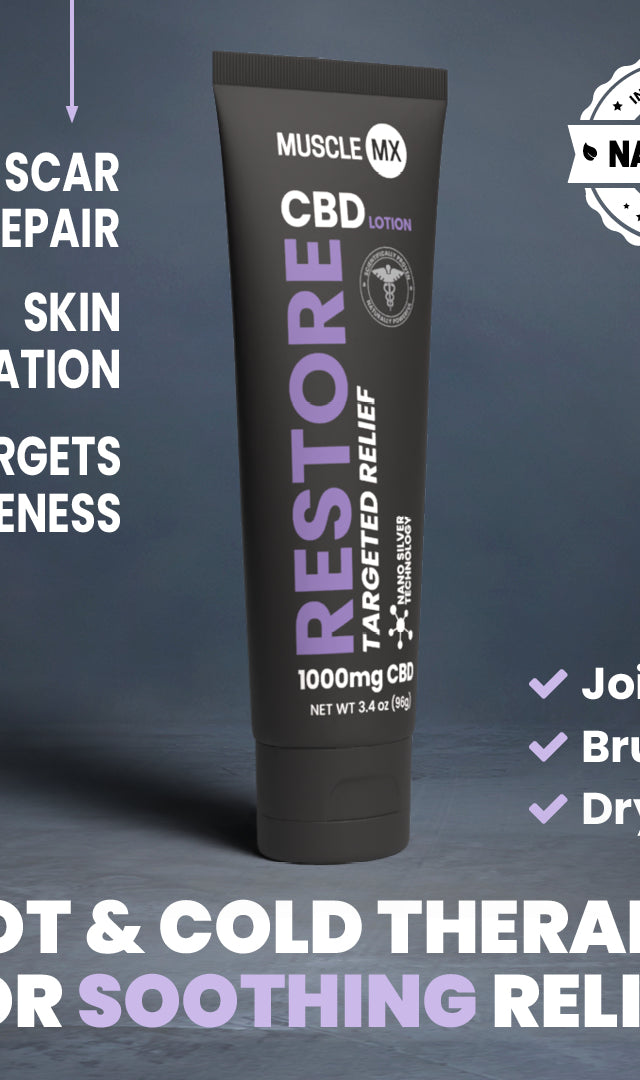Tendonitis vs. Arthritis: What's the Difference?
|
| Have you ever experienced aching, burning, throbbing, or sharp pain in your ankles, knees, hips, or shoulders? There are many different reasons that you might experience pain in these parts of the body. Sometimes it’s the joints themselves that experience inflammation, which is called arthritis. |
Other times, your discomfort is caused by inflammation in the tendons that surround the joints and hold them together — and this is called tendonitis. How can you know the difference between these two inflammatory conditions so that you don’t accidentally aggravate them?
Any condition that includes “-itis” in its name is an inflammatory condition. There are many different types of diseases and illnesses that cause inflammation in the body. Arthritis and tendonitis can be easily confused because you may experience similar pain from both conditions, often in the same area of the body. For example, if you experience tendonitis in your foot, it may be easy to mistake it for certain types of arthritis that also affect the foot.
What Is Arthritis?
There are several hundred joints in our bodies. Some of the joints we rely on the most for our daily activities are our spinal vertebrae, shoulders, wrists, fingers, hips, knees, ankles, and toes. Arthritis attacks the joints, causing swelling, tenderness, or even popping or crunching sensations.
There are many different forms of arthritis, but some of the most common types include:
Osteoarthritis
This is the most common type of arthritis. It usually affects us because of age and the use of our joints over time. You’re much more likely to develop osteoarthritis if you’re over the age of 50, but you can develop it earlier if there’s a lot of stress on particular joints.
It’s often felt as a cracking, popping feeling when using a specific joint. It’s usually manageable, but severe or traumatic damage from osteoarthritis may result in the need for a joint replacement.
Rheumatoid Arthritis
This form of arthritis is autoimmune, meaning that the body itself is attacking the lining of the joints, leading to swelling, redness, and tenderness. You’re more likely to develop RA if you’re older, and women are much more likely to have RA than men. Because there isn’t a cure, the discomfort from RA has to be managed. It often affects those who have it with painful flare-ups.
Gout
This form of arthritis is caused by a buildup of uric acid in the joints. Smoking and overconsuming foods that cause uric acid buildup are common causes of gout. Sharp, throbbing, burning, and very intense pain, especially in the big toe, is the most common symptom of gout. Flare-ups of gout pain can arrive seemingly without reason, sometimes making it difficult to get around.
What Is Tendonitis?

Tendons are strong connective tissue that connects muscles to bones. Tendonitis is when the tendons become inflamed from injury or disease. There are many tendons that surround the joints in our body, so pain from tendonitis is easy to confuse with arthritis. Common causes of tendonitis include overuse, straining, and over-exercising.
If you’re experiencing tendonitis, you’ll probably feel swelling, redness, pain when moving the inflamed tendon, and a scraping sensation.
Tendonitis can occur in any tendon in the body, but there are common areas and tendonitis conditions. These include:
Tennis or Golfer’s Elbow
When the tendons in the elbow become inflamed because of repeated motions, then tendonitis can take hold. Tennis elbow affects the outside of the elbow, while golfer’s elbow affects the inside.
Achilles Tendonitis
When the Achilles tendon becomes inflamed because of injury or overuse, then tendonitis can cause painful inflammation in the ankle and down the back of the foot. This is a very common form of tendonitis that affects runners and athletes.
Rotator Cuff Tendonitis
The rotator cuff is the name of several tendons and muscles that connect to the bones in the shoulder and provide ample range of motion. When tendons in the rotator cuff are injured, then tendonitis can cause the whole shoulder to feel swollen and achy. Often lifting, pushing, or pulling heavy items can cause rotator cuff tendonitis.
Jumper’s Knee
The patellar tendon connects to the patella bone in the knee and helps it extend. Jumper’s knee occurs when this tendon becomes inflamed from being injured. It’s common for sports or activities that involve a lot of running and jumping, like basketball or volleyball, to cause jumper's knee.
Am I Feeling Tendonitis or Arthritis?

It can be hard to distinguish between tendonitis and arthritis because they both involve inflammation and tend to affect the same areas of the body. There are a number of factors that influence whether or not your pain is coming from an inflamed tendon or a joint:
-
Onset: How quickly the inflammation begins may indicate whether it’s a condition like osteoarthritis (which develops slowly) or an injury that’s caused some temporary tendonitis.
-
Area of the body: Any joint can experience arthritis, and any tendon can experience tendonitis, but certain forms of each tend to affect certain parts of the body. For example, gout tends to affect the big toe, so a sudden attack of pain there probably indicates that form of arthritis. However, sudden pain in the area of the Achilles tendon is more likely to be a form of tendonitis.
-
Potential causes: In general, tendonitis is more associated with specific injuries or repeated stress on a particular tendon. Arthritis can also be caused by injury, but several forms of arthritis are autoimmune and a result of the body attacking itself from within.
How Are Inflammatory Conditions Diagnosed?
Because of the similarities in pain and inflammation, the best way to diagnose the difference between tendonitis and arthritis is by getting an X-ray or MRI. Your healthcare provider can see where exactly the inflammation is occurring, and that will determine what kind of “-itis” it is.
If your pain first started following an injury, seeing a sports medicine doctor is a great way to get a diagnosis and suggestions for treatment. You may be referred to a physical therapist, but more severe cases of tendonitis or arthritis may require a surgical procedure.
How Can You Treat Inflammatory Conditions?
Because tendonitis and arthritis share a lot of similarities, many of the same treatments work to ease pain, discomfort, tension, and stress. Here are a few ways to get relief from both tendonitis and arthritis:
Ice and Heat
Using an ice pack or cold compress is one of the easiest ways to lessen inflammation, especially if there’s an injury. Using a heating pad, soaking in a warm bath, or using a jacuzzi are all good ways of using heat to relax both tendons and joints.
Medications
There are many over-the-counter medications that can be purchased to deal with lower-level inflammatory pain. These include NSAIDs (non-steroidal anti-inflammatory drugs) like ibuprofen or pain relievers like aspirin or acetaminophen.
For more serious pain, a doctor might prescribe muscle relaxers or prescription pain medication.
Rest
If you’ve injured yourself, then taking it easy so you don’t aggravate the inflamed joint or tendon is the first step to feeling better. Many cases of inflammation in the joints or tendons will resolve themselves as the body works to naturally calm the inflammation.
If you run every day, then taking a few days off or changing your activity to something like cycling that causes less impact on your joints and tendons might be necessary.
Topical Rubs
There are a variety of creams, lotions, balms, and oils that can be applied to an area of pain to ease discomfort and tension. Some topical products contain medications like lidocaine to numb the pain away.
Other products work to confuse the nerves in a joint or tendon to distract from the pain. Natural topicals using essential oils or herbs can work to soothe feelings of tension and provide relaxation.
Dealing With Discomfort
If you're suffering from any inflammatory condition, whether it’s arthritis or tendonitis, it’s worth discussing with your healthcare provider, as they are the best person to give you advice on how to handle it. Having a firm diagnosis can make all the difference when it comes to treatment.
If you already know your condition, there are many things you can do at home today that might help with the pain and discomfort.
Sources:
Tendonitis | Johns Hopkins Medicine
Spinal Arthritis (Arthritis in the Back or Neck) | Johns Hopkins Medicine
The Best Ways to Treat, Prevent Tendonitis | University of Rochester Medical Center















































